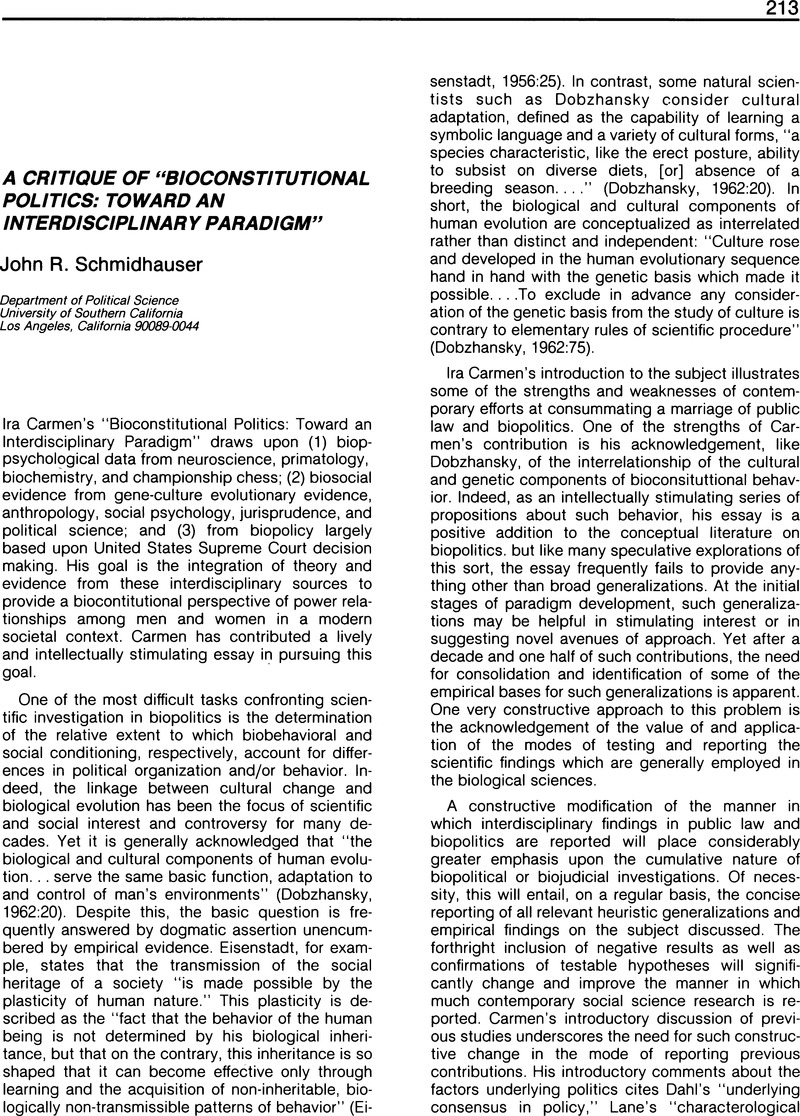Crossref Citations
This article has been cited by the following publications. This list is generated based on data provided by Crossref.
Somit, Albert
Peterson, Steven A.
and
Seo, KyoungKyo
1988.
Biopolitics: Publication Patterns in 1987.
Politics and the Life Sciences,
Vol. 7,
Issue. 1,
p.
67.



